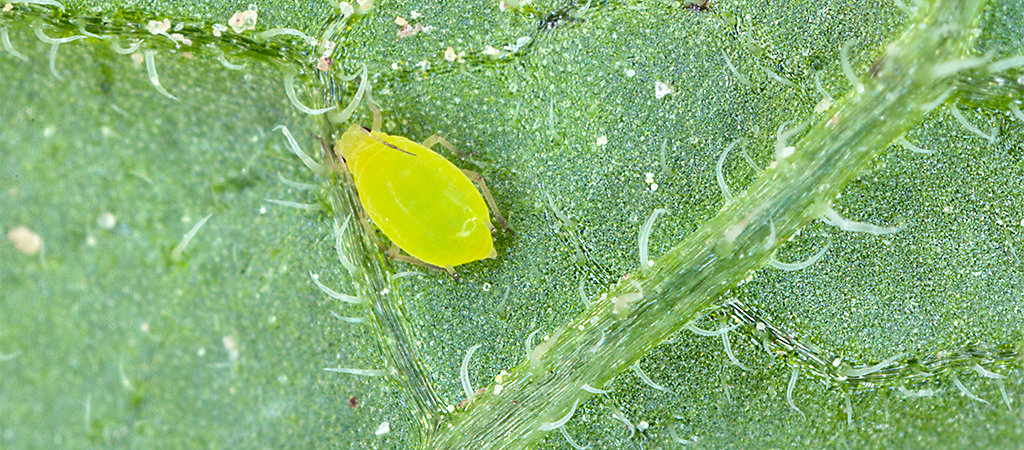The impact of aphids
There are multiple species of aphids in existence across Canada, each of which can cause varying levels of impact on crops. Some species damage potatoes by sucking fluids from the stems and leaves, while others inject a toxin into the plant which causes the leaves to curl and potentially die off.2 What’s more, during feeding, aphids can also spread Potato Virus Y (PVY), one of the most dangerous diseases for potato growers as it affects both yield and crop quality.3 While different potato varieties have their own degrees of susceptibility to PVY, it is important to dedicate the same level of monitoring and managing of aphid populations in all varieties.
Identifying aphids
The most common, and most concerning, species of aphids affecting potatoes in Canada are the green peach aphid, the potato aphid, and the buckthorn aphid.4 All species of aphids can range in size from 1 - 4mm in length, depending on whether they are winged or wingless. Physically, aphids are soft-bodied and pear-shaped and feature long antennae and a pair of cornicles (short tubes) on either side of their body toward the end (resembling tailpipes on a car)5 They have tiny, translucent bodies, and typically appear green, red, brown, black, yellow, or white in colour.6 Most significantly, it is the presence of cornicles that distinguish aphids from virtually all other types of insects.7

Scouting and managing aphids
High numbers of aphids begin to occur in early springtime, which is important to note since these earlier established populations can carry PVY.8 In potato-growing regions of central and Eastern Canada, the potato aphid is often the first to appear, typically in May or June.9
Monitoring potato fields via scouting is an effective way to catch the early establishment of aphids before they lead to an infestation. When scouting, specific attention should be paid to the upwind edges of the field (typically the north and west areas, which aphids prefer).10 Depending on the species, plants can be visually inspected, or traps can be used to determine the number of aphids present and economic thresholds for control.
To control aphids, a mix of cultural and chemical methods can be used, including:
- Planting only certified seed
- Controlling host weeds, such as nightshade and sow thistle
- Rogueing of infested plants11
- Application of insecticide and crop oil
Protecting potatoes with Closer™ insecticide
To keep aphid populations low, the most effective tool is using an application of insecticide. Closer™ insecticide with Isoclast™ active is a superior control product that offers fast-acting, complete knockdown and residual control of aphids. Closer’s rapid activity decreases the likelihood of virus transmission via aphids, protecting overall crop quality and yield. Apply at a rate of 125 – 150 mL/ha using a maximum of two applications per growing season.
Closer provides potato growers with six key benefits:
- Effective at low-use rates
- Fast knockdown and residual control
- Control through both contact and ingestion
- Excellent translaminar and systemic activity
- Integrated pest management tool
- Safe to use around beneficial insects when used according to the product label
Speak to our horticulture experts about how Closer™ insecticide with Isoclast™ active can help you effectively manage aphids this season, and next.






